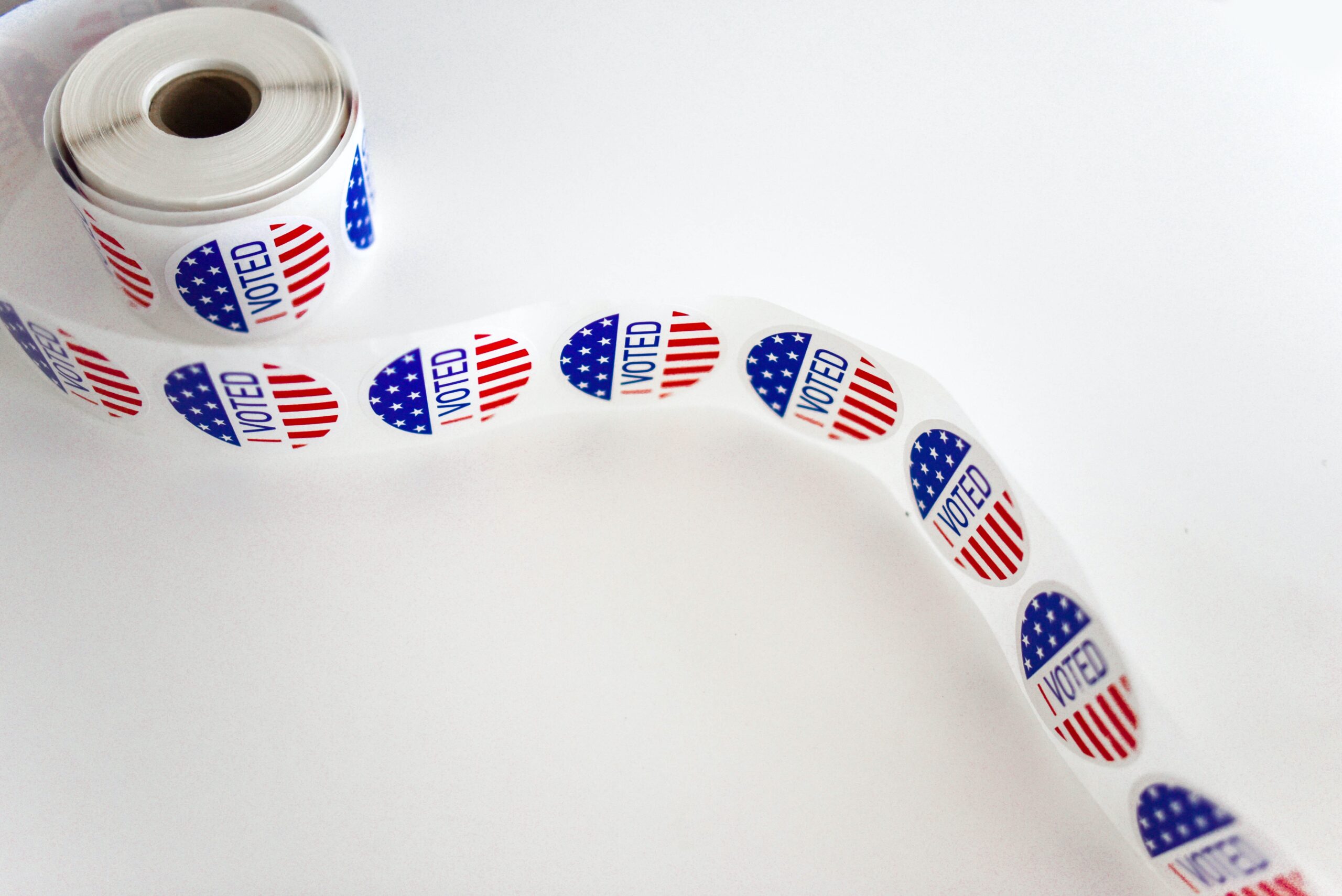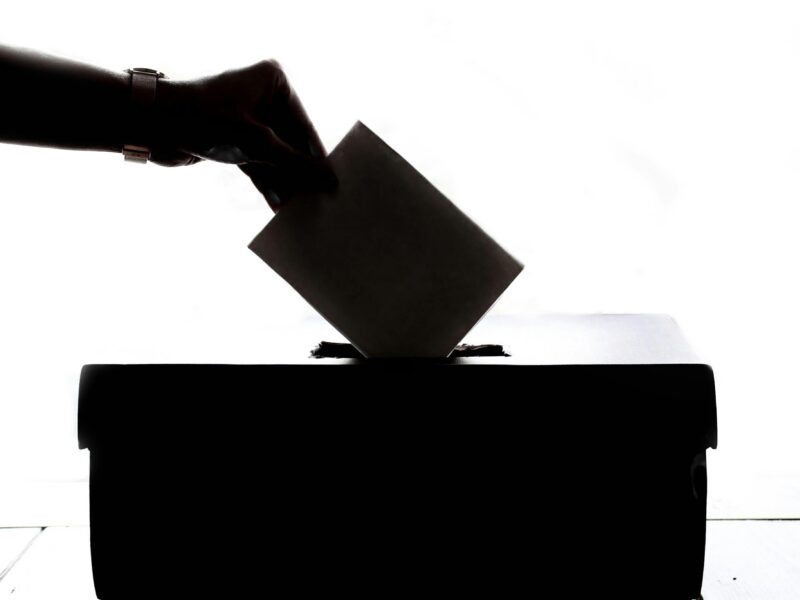11/3/20
Quick Note: This is one of the predictions referenced in my “What Did I Learn from My Predictions?” post. It has not been changed, formatted, or further proofread from the document that I sent to my friends & family and pinned on my private Twitter.
Summary/TL;DR:
- Former Vice President Joe Biden is going to be elected the 46th President of the United States
- The pandemic is issue #1, and Trump’s poor response will carry Biden to over 300 electoral votes
- Trump never adjusted his strategy to tighten this race, and it will catch up with him today
- Data is better and more reliable this election cycle, and Biden still wins with data error, except for the most pessimistic (or optimistic for Trump supporters) case
My Electoral Map:
After making seven maps and reviewing a few others, my personal opinion is that the map below will be the final map. However, there is plenty of reason to doubt the map because getting a 100% correct electoral map is about as easy as picking the Super Bowl winner each year at the beginning of the season. It will happen for someone, but that doesn’t necessarily have to be me:

A few quick notes:
- History Makers: Texas and Georgia are surprises, even to me, that I’m giving to Biden. The last Democrats to win those states were Jimmy Carter (’76) and Bill Clinton (’92), respectively. However, based on early voter turnout (which statisticians note should not matter) and pandemic sentiment polling, I have pushed those two states into the column for Biden. High turnout typically favors Democrats, and the pandemic is a bad issue for Trump in both states to varying degrees.
- Trends Continuing: Iowa and Ohio are for Trump on my map, which may sound outrageous for map that has Georgia and Texas blue. However, these states have been getting steadily more Republican over time, and the pandemic has not impacted Trump in those states as much as it has in other states, per my analysis below. However, it is razor thin in Ohio, and it is the most likely of the two to flip with the general election results.
- Congressional Districts: The Nebraska 2nd and Maine 2nd are 2 electoral votes that are up for grabs, and my analysis didn’t reach any detail findings there. Therefore, I’m simply falling in line with the 538 projection on 11/3/20 for this.
The following memorandum and appendix get into more detailed analysis that helped form my opinion here.
Introduction:
Former Vice President Joe Biden is going to be elected the 46th President of the United States. In many ways, this prediction has made sense all year, but the surprise from 2016 has made anyone analyzing this election more cautious. It has been a long, weird, and hard year. President Trump was impeached this year. A pandemic has gripped our nation, the economy, our normal routines, our ability to visit each other, and tragically caused us to say goodbye to loved ones and friends. The police killings of George Floyd and numerous others black Americans has led to renewed vigor and pushes for social justice and inched America closer to the racial conversations and actions that it so desperately needs.
On the most important issues, uncertainty is the overarching motif for this year and for this campaign. In truly uncertain times, people look to their leaders to chart the way and be steady and optimistic in leading them back to a status quo that is better and more certain than even before. However, in the United States, we have Donald J. Trump as that leader. In full transparency, I am firmly against this president. But, even if I am being objective as I was with George W. Bush after 9/11 and Barack Obama after the financial crisis, Donald Trump has failed this leadership test. He answered the pandemic by downplaying it and making public health a partisan issue when transparency and unity were required. When social and racial justice came to the forefront, Trump responded by tear gassing protestors and empowering white supremacists when compassion and unity was called for. And, somehow without including impeachment, these are his biggest failings, and Trump has made no adjustments to account for this in his policies, rhetoric, or campaign. Donald Trump is not a conventional president or Republican politician. This strength of his in ’16 is why he will lose in ’20.
This memorandum is, however, not my opinion on why Donald Trump is an inept president. I’m simply trying to set some needed context for why I can state so strongly that Biden will win, despite the prediction misses in ’16. In this memo, I will cover the data and strategy driven reasons for why Biden will win, why this data is more reliable than ’16, and what to look out for to predict an unlikely Trump victory. While Biden might not be perfect candidate for this moment, this election is a referendum on Trump and the pandemic will propel the former Vice President to a win.
Coronavirus is issue #1:
Coronavirus, whether it exacerbates concerns about the economy, healthcare, or your personal health, is issue number 1 in this election. While I could not find definitive polling, anyone can see how this is an overarching issue. Every aspect of our lives has been disrupted, sometimes tragically, by the pandemic, and Trump’s inability to control the virus will move people against him. Outside of some Trump supporters who are motivated by the political fight around the pandemic, this issue is a losing issue for the president, as indicated by the chart below:
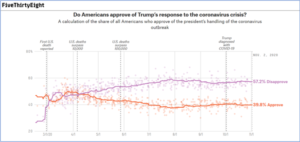
Trump’s net pandemic approval rating is negative 17.4 points in an environment where 67% of Americans are very or somewhat concerned about being infected by the virus[i]. As we all know though, national polls do not always translate to the Electoral College. Thus, I made electoral projections based on the importance of the pandemic and Trump’s response approval in 15 states, hereinafter called the Coronavirus Importance-Performance Estimate (“CIPE”).
This analysis has weaknesses though. Unlike looking at polling averages or the 538 forecast, this reduces my data set to one poll per state, which increases the chance for error. I also compare results across polls that have different methodologies and questions. To control for this, I compare the CIPE results to other polling, forecasts, and metrics (i.e., job approval ratings) to further assess a poll’s credibility. I also consider the state’s voting history in a separate projection (called “CIPE+History”) to help rationalize further. For example, in Ohio, I don’t have direct information on whether voters trust Biden to handle the virus, but I have Trump’s net job approval rating, which is 0[ii]. Also, in that same poll, 51% of Ohioans refer to the pandemic as a “major threat.” In my interpretation, Trump will have a slight advantage in Ohio because it appears that his weakest issue has less emphasis in Ohio.
In total, both analyses found victories for Biden with over 300 electoral votes:
CIPE:

CIPE+History:

Trump’s approach renders an assessment of Biden’s strategy pointless:
A professor once said to me that “life is graded on a curve.” For me, that is the only way to sum up a strategy assessment for the two campaigns. For example, continued social justice and racial equality protests and conversations should work firmly against Biden, who was the architect of the Clarence Thomas confirmation and the 1994 Crime Bill and once said that if black people aren’t voting for him that “you ain’t black.”[iii] But when compared to a candidate who won’t condemn white supremacists and denies systemic racism while proclaiming to be the best President for black people ever, you begin to see how a strategic assessment is irrelevant.
Nonetheless, Trump’s strategy has been to double down on even the most unpopular issues for him even though it appears to be costing him with seniors and in the suburbs. He could do a solemn mea culpa on his pandemic handling and announce a detailed response plan, but he won’t. Trump could push forward on racial issues and improve with both groups again, but he won’t. Trump could even state that he would accept the results of the election and defend democratic institutions, but he won’t. This leaves Joe Biden with very wide latitude on messaging, issue positioning, and battleground state prioritization.
Biden has used this latitude in important ways. Comparisons to Trump have closed any potential enthusiasm issues for Biden. The pandemic has also given Biden more control over media appearances, which limits the gaffe-proned Biden’s mistakes. The Biden campaign has focused more on the Blue Wall, which fixes a mistake from the Clinton campaign. However, Biden holding fewer campaign events than Trump and focusing more on virtual organizing are potential weaknesses. But these actions also reinforce his messaging regarding the seriousness of the pandemic, and virtual organizing, while not as proven, should be a viable substitute given the absentee voting levels.[iv] Usually, falling behind in organizing and events would be a critical failing in a normal year, but this is not a normal year.
Basically, Trump is running a strategy as though he is in a close election that is based solely on turning out his base to win. There is no evidence to say that is the case, but it is what he is doing. Veteran campaign reporter Amy Walters with The Cook Political Report digs into this more[v]. Ms. Walters highlights four key factors that enabled Trump to win with this strategy last time:
- A united, enthusiastic, and engaged GOP base;
- A deeply flawed opponent;
- Decent support among independent voters; and
- Third-party candidates siphoning off enough votes to allow Trump to win key states with a plurality as he did in 2016.
She then notes that only the first factor is at play in this election. In addition to that, I’ll add that Biden has bigger leads than Clinton in the polls at this point, and his higher favorability ratings make it difficult for negative attacks to stick.
As I stated before, all these strategic errors from the Trump campaign render assessing the Biden strategy pointless. It might not be A-rated strategy work by Biden, but, on this curve, it passes easily.
But I thought all this was wrong in 2016:
Yes and no. There are plenty of articles that rehash what we (a royal “we” here) should have been reading in polls and forecasts and what we shouldn’t have been, and I’ll commend you to the internet to find them. But it appears that the fluidity of the electorate, as indicated by high number of undecideds and third-party (“3P”) voters, allowed the Comey letter to swing undecideds, who may have been predisposed to Trump, at the last minute[vi] and that pollsters didn’t weigh for education levels in the polls[vii]. In this cycle, there are less undecideds, and most reputable pollsters are weighing for education now[viii]. Therefore, by design, the polls are more reliable than last time.
But what about the “shy” or “hidden” Trump voters in the polls? To the extent that they exist, their impact will be more limited. According to two Cornell professors[ix], “hidden” Trump voters, who camp out in the undecided polling number, would be the main source of error. This feels anecdotally correct as well. However, due to fewer undecideds, a polling error from “hidden” Trump voters won’t likely change the outcome.
However, the easiest way to adjust for this is to apply the polling error from the past elections in various ways to the current polling. As a result, I built three pessimistic (because I voted for Biden) projections. I applied varying levels of polling errors to the 538 polling averages and popular vote forecasts as of 11/1/20. When I did this, I found one win for Trump.
This is a crude and brute-force approach for this memo. Polling experts will apply specific polling error on a state-by-state basis. Nate Silver did exactly that and still gave Biden 335 electoral votes[x]. This verifies just how pessimistic my polling error approach is. Only the most pessimistic and borderline non-scholarly approach can yield a map where Trump wins by the narrowest of margins. The maps are attached in Appendix A. Therefore, it takes an unhealthy amount of data pessimism and skepticism to rationally predict a Trump win, even though a Trump win is not impossible.
Trump Path to Victory:
The most realistic Trump path to victory requires one of two things, but most likely both,:
- A systemic polling error or an unknown strategy advantage in his favor that could force a recount or an outright win in key states; and/or
- An opportunity to challenge vote counts.
In short, Trump must narrow the gap to force key elections to recount where the legality of ballots is at stake. 538 gives this a 4% chance of happening[xi], but we must assume if it does that the 6-3 Supreme Court conservative majority will break a tie for Trump. Generally, you should look for Biden wins under .5-1% to begin entertaining this possibility. The Trump campaign has also floated an even deeper subversion of democracy by changing the appointment of electors at the state legislature after the vote[xii]. If any of those events occur, a full re-assessment of Trump’s chances of victory, among other things, will be required. For now, though, the odds are long that we’ll get to that point.
Conclusion:
While nothing is guaranteed, I fully admit that if someone described this election context and polling to me with no names or party ID before 2016 . . . I wouldn’t hesitate to proclaim the incumbent would lose massively. And I won’t hesitate now because of what happened in 2016. Can Trump win? Yes, but it is not likely. Is there something unforeseen that should be impacting my prediction? Yes, but it is unforeseen, and I’ll see it when it gets here. Until then, I’ll end this memorandum as it began. Former Vice President Joe Biden is going to be elected the 46th President of the United States.
APPENDIX A
All polling errors are based on averaging various statewide polling errors in presidential election years since 2000.
Optimistic Biden: Applies +4.2 polling error equally to 538 polling averages and popular vote forecasts as of 11/1/20
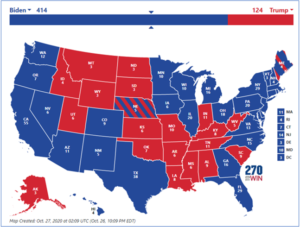
Optimistic Biden Light: Applies a +3.7 polling error equally to 538 polling averages and popular vote forecasts as of 11/1/20

Pessimistic Light: Applies a -3.5 polling error equally to 538 polling averages and popular vote forecasts as of 11/1/20
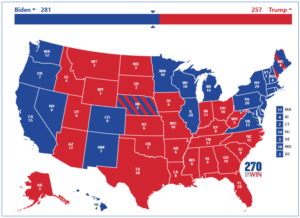
Pessimistic Medium: Applies a -4.2 polling error equally to 538 polling averages and popular vote forecasts as of 11/1/20

Pessimistic Heavy: Applies a -5.2 polling error equally to 538 polling averages and popular vote forecasts as of 11/1/20
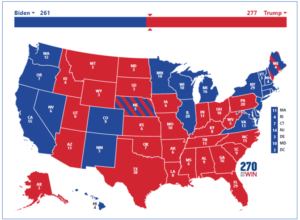
[i] https://projects.fivethirtyeight.com/coronavirus-polls/
[ii] https://emersonpolling.reportablenews.com/pr/super-poll-sunday-polling-in-the-midwest-shows-biden-ahead-in-michigan-and-tight-races-in-ohio-and-iowa
[iii] https://www.nbcnews.com/politics/2020-election/biden-tells-african-americans-you-ain-t-black-if-they-n1212911
[iv] https://www.nbcnews.com/politics/2020-election/coronavirus-ground-game-gamble-hits-home-stretch-n1242803
[v] https://cookpolitical.com/analysis/national/national-politics/gamble
[vi] https://auburnpub.com/opinion/columnists/cornell-professors-are-there-still-hidden-trump-voters/article_6464a11e-f754-5cd5-8ed0-2740508b203b.html
[vii] https://youtu.be/TambSayfCOE; Education level turned out to be a bigger predictor for who was going to vote for Trump versus who didn’t.
[viii] https://youtu.be/TambSayfCOE
[ix] https://auburnpub.com/opinion/columnists/cornell-professors-are-there-still-hidden-trump-voters/article_6464a11e-f754-5cd5-8ed0-2740508b203b.html
[x] https://fivethirtyeight.com/features/trump-can-still-win-but-the-polls-would-have-to-be-off-by-way-more-than-in-2016/
[xi] https://projects.fivethirtyeight.com/2020-election-forecast/?cid=rrpromo
[xii] https://slate.com/news-and-politics/2020/10/trump-plan-legislature-appoint-electors-end-democracy.html

